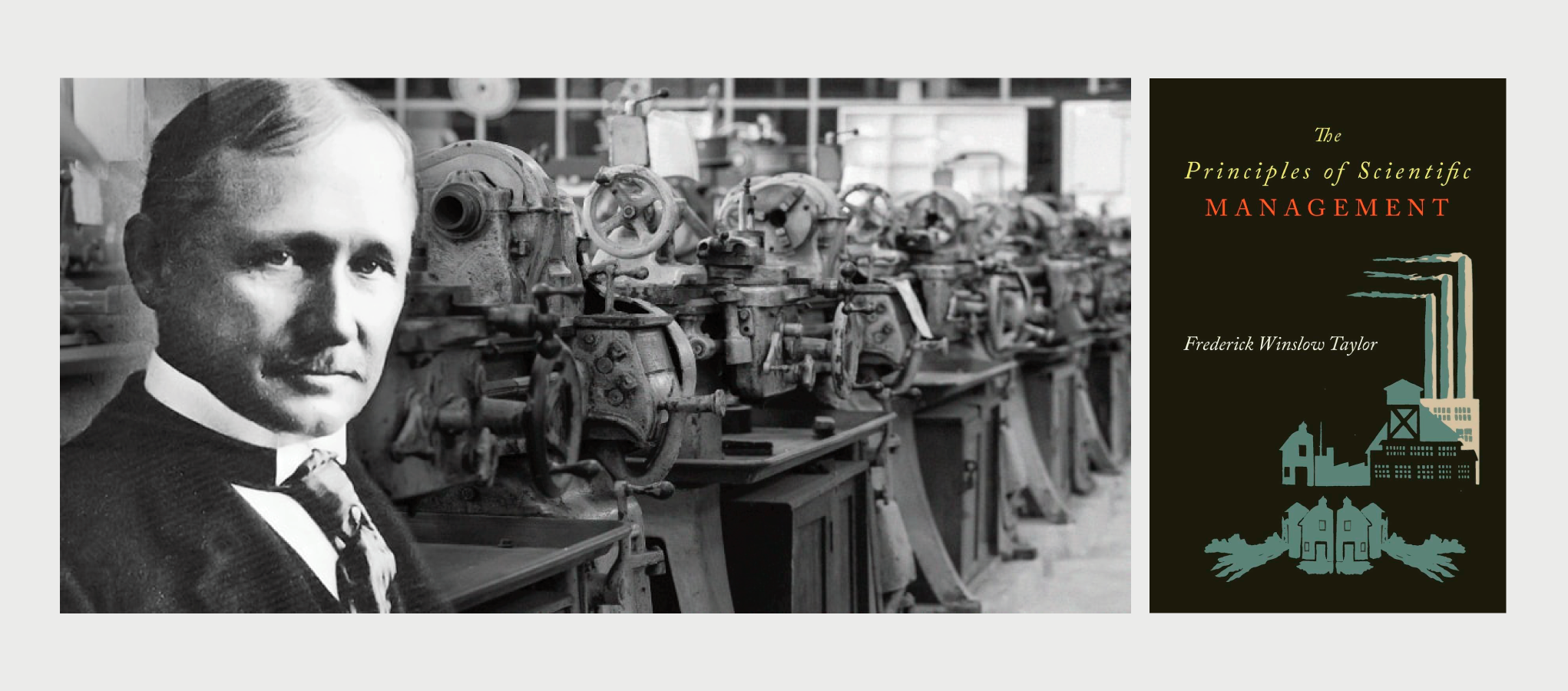Today the terms “user experience” or “UX” are mostly associated with all things software - apps, websites, and IoT interfaces like Google Nest or Tesla’s dashboard. Don’t make the mistake of thinking that UX is a modern concept when elements of it can be traced back as far as 6000 years ago.
UX history timeline: Feng Shui, Ergonomics, Taylorism, Toyota, Henry Dreyfuss, Disney, Xerox, Apple, Don Norman
4000 BC: Feng Shui and UX design
The concept behind Feng Shui dates back 6,000 years and is derived from an ancient poem that talks about the connections between a human life and the environment it flows in. Feng Shui literally translates as "wind" (feng) and water (shui). It refers to the spatial arrangement of objects relative to the flow of energy (chi).
Does spatial arrangement sound familiar? Feng Shui and UX design share a common goal: to create harmonious spaces that make us feel safe, productive, and at ease. Both of them focus on balance, decluttering, and function to achieve this goal. Both disciplines are working with layout, framework, materials, and colors.
Feng Shui is the original UX design for the home, both the interior and the landscape.
UX design and Feng Shui have a common goal of creating harmonious spaces. Photo: The Feng Shui Living
500 BC: Ergonomics, Ancient Greece, and UX design
Ergonomics translates as “work“ and “natural laws” and is a term coined to describe how people interact with elements of a system. There’s a strong evidence that suggests that Greek civilizations designed their tools and workspaces based on the principles of ergonomics. For example, there is a widely cited work from Hippocrates (460 - 370 BC) where he describes the set-up of a surgeon’s workspace in detail. “As regards the tools, we will state how and when they should be used; they must be positioned in such a way as to not obstruct the surgeon, and also be within easy reach when required.”
Ergonomics, then, is a form of UX design for the physical workspace.
Ergonomics is a form of UX design for the physical workspace. Photo: The Ergonomics Unit
1900s: Taylorism, workspace efficiency, and UX design
A new worldview emerged at the turn of the 20th century - the mechanical worldview. It is exemplified by the Industrial Revolution pioneers Frederick Winslow Taylor and Henry Ford who both share the goal of making human labor more efficient and optimized.
Frederick Winslow Taylor, a mechanical engineer from Pennsylvania, conducted research on the interactions between workers and their tools. This research is perhaps one of the first examples of systematic UX research. Summed up in Taylor’s book “The Principles of Scientific Management”, it laid the foundation for Taylorism, known as Scientific Management.
Taylor’s focus on optimizing the relationship between humans and their tools can be thought of as a form of UX design principles.
Frederick Winslow Taylor’s research in interactions between workers and their tool set the foundation for UX design principles.
1940s: Toyota, user testing, and human focus
Taylorism is often criticized for not valuing human input enough, something Toyota Motor Company, founded in 1937, sought to correct. Famous for its humility and respect for people, Toyota Production System can be considered an important precursor to user-centered design.
Human input was highly encouraged at Toyota - so that an average factory worker could stop the assembly line if it needed an improvement, which can be considered a form of usability testing.
What’s more, the famous “Five whys” technique also originates at Toyota. It was developed by Sakichi Toyoda as a problem-solving technique that helped workers get to the bottom of any technical problem. It is widely used in UX research now, and if you are not familiar with it, definitely check it out.
Taiichi Ohno, the father of Toyota Production System. Photo: courtesy of Toyota
1955: Henry Dreyfuss and Designing for People
Henry Dreyfuss, an American industrial engineer, is another significant figure in the history of UX design, especially when it comes to usability improvements. Dreyfuss is known for iconic products like Hoover vacuum cleaner, Big Ben alarm clock, telephones, John Deere tractors, New York Central Railroad's trains, and many more.
In his book “Designing for People” Dreyfuss advocates for designing for safety, comfort, and efficiency as well for a wide range of audiences. He explains the role of an industrial designer in a way that foreshadows that of UX designer:
“When the point of contact between the product and the people becomes a point of friction, then the industrial designer has failed. On the other hand, if people are made safer, more comfortable, more eager to purchase, more efficient - or just plain happier - by contact with the product, then the designer has succeeded.”
In his book “Designing for People” Dreyfuss advocates for designing for safety, comfort, and efficiency. Photo: Wikipedia
1955: Walt Disney and UX design
In parallel with Dreyfuss, another man was experimenting with UX design - Walt Disney. He is often called the first UX designer and here is why.
In the 1950s, Disney joined the amusement park industry, and in July 1955 he opened Disneyland in Anaheim, California. The brilliant innovator envisioned the park to be an immersive experience where every detail is accounted for. He called his team at the park Imagineers and even created the guiding principles for them to follow, which later became known as “Mickey’s 10 Commandments.”
These ten principles resemble that of UX design greatly: know your audience, wear your guest’s shoes, use good storytelling techniques, make use of all the non-verbal ways of communication - color, shape, form, texture, avoid cognitive overload, tell only one story at a time, bring clarity, create fun, pay attention to cleanliness and routine maintenance.
Walt Disney is often called a first UX designer because of his keen interest in creating creating magical experiences. Photo: courtesy of Disney
1970s and 1980s: Xerox, Apple, and first personal computers
UX design as a discipline started gaining momentum in the 1970s along with the era of personal computing. In 1970, the Xerox Palo Alto Research Center (Xerox PARC) opened that would invent the graphical user interface (GUI), the mouse, object-oriented programming which laid the foundation of the modern personal computer. In 1974, a small company MITS made the first personal computer, the Altair, that was popular among hobbyists. However, personal computers did not hit mainstream until the Apple that broadened the appeal beyond the hobbyists.
Fast forward to 1984. Apple Computer released the original Macintosh, the first mass-market personal computer featuring graphical user interface, built-in screen and mouse. It instantly established Apple as a key innovator of user experience.
Left: Xerox lab. Right: Steve Jobs and Macintosh computer. Photo: courtesy of Xerox and Apple
1993: Don Norman and UX design
Parallel to Apple’s efforts, one man is working on a book called User Centered System Design: New Perspectives on Human-computer Interaction - Don Norman, a writer and a consultant in cognitive engineering with the M.S. degree in Electrical Engineering and a PhD in Psychology. It was in User Centered System Design, published in 1986, that the term “user-centered design” was introduced. The key idea of the book was that a designer should focus on the needs of the user and not on the system itself. Normal developed this idea further in his second book - The Design of Everyday Things in 1988, which has been a UX staple since.
In 1993 Don Norman joined Apple as a User Experience Architect, which makes him the first person to have “UX” in his job title. It was at Apple that Don Norman devised the term “user experience” and set up a “User Experience Architect office”.
Don Norman was the first person to coin the term “UX”, “user-centered design”, to have the title of “UX” for his position, and as a result, Apple is widely recognized as the leaders of UX design.
Don Norman, Photo: courtesy of NGGroup
The fascinating journey of UX design continues to unfold in parallel to our technological advances, from Artificial Intelligence, the Internet of Things, VR and AR to the dashboard of the future spaceships traveling to Mars.
As technology becomes more entrenched and integrated into our lives, it is my hope that UX design will continue to aspire to put the interest of the user, not profit or engagement at its center.










